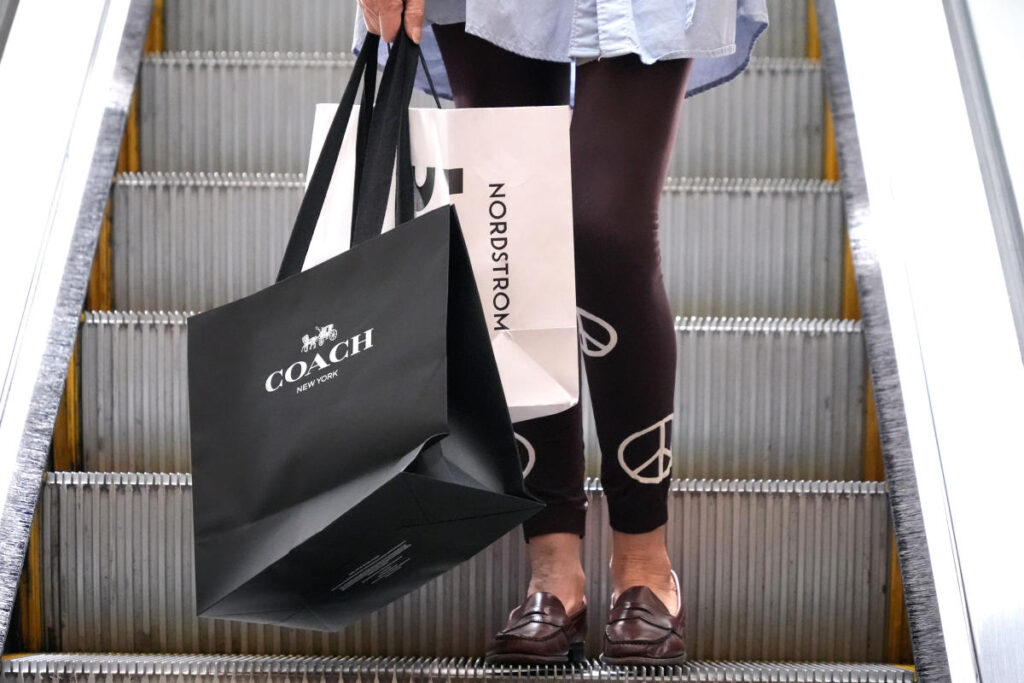Despite rising costs of living, Americans have continued to spend significantly at retail stores and restaurants, a trend that may seem counterintuitive given the economic squeeze from inflation. Key data from the Federal Reserve indicates that this robust consumer spending is primarily driven by wealthier households, benefitting from substantial increases in income, home equity, and stock market gains. This shift in spending patterns, notably from pre-pandemic behaviors, suggests that consumer expenditure—an essential pillar of the U.S. economy—could support continued growth in the coming year. While affluent consumers thrive amid economic advancements, lower-income earners face ongoing financial challenges due to essential expenses like rent and groceries.
The disparities in spending illustrate the existing divide between different income groups. While lower-income consumers are starting to see a rebound as their inflation-adjusted incomes rise, it is noted that it could take years for their overall financial health to recover to pre-pandemic levels. This stark contrast between the economic sentiment of many Americans and robust government data reveals a complex dynamic, especially relevant as the presidential race intensifies. A significant portion of consumer spending growth is concentrated among wealthier individuals, resulting in an economy that continues to expand despite the Federal Reserve’s previous high-interest rate policies aimed at controlling inflation.
Retail sales data highlighted by the Commerce Department presents a more promising portrait of consumer behavior. For instance, the recent report showing a 0.4% increase in sales from August to September suggests that consumers are maintaining confidence in the economy. In particular, restaurant sales, which increased by 1%, indicate that many households feel comfortable with their disposable income. Furthermore, the Federal Reserve Bank of Atlanta projects rapid growth, placing the economy’s growth rate at an impressive 3.4% for the recent quarter, reinforcing the argument for sustained consumer expenditure.
At the heart of this consumption trend among higher-income households is the dramatic increase in housing and stock market values witnessed since the onset of the pandemic. Housing demand remains high, complemented by low supply, driving home values upwards. Similarly, stock market performance, exemplified by a notable 22.5% jump in the S&P 500 index this year, has significantly bolstered the wealth of the wealthiest Americans, who own approximately 80% of stock market value. According to the Federal Reserve, there has been a staggering 70% increase in home equity for the wealthiest one-tenth of Americans since early 2020, fueling their spending power and altering the consumption landscape.
Contrastingly, low to middle-income consumers encounter a more challenging financial reality. Research indicates that discretionary spending among lower-income households has decreased as essential costs surge, with individuals at the lowest income bracket experiencing a notable 2.5 percentage point drop in discretionary spending since 2019. Inflation has disproportionately impacted their budgets, compelling them to prioritize basic needs such as housing and food over non-essential purchases. The financial strain is evident, with an increasing proportion of lower-income borrowers falling behind on credit obligations, a situation exacerbated in the past two years.
Despite these troubling trends for lower-income consumers, experts like Harvard economist Karen Dynan suggest that these challenges may not significantly derail overall economic performance. While cracks in consumer spending are becoming apparent, they argue that the general economic story remains strong. Analysts remain hopeful about a potential resurgence in overall consumer spending driven by inflation-adjusted income gains. Both Dynan and Pearce convey optimism that the worst may be behind for consumers, as rising incomes could restore greater purchasing power across all demographics over the next months, fostering a resilient economic outlook. As the economy continues to navigate these dynamics, the varied responses to changing economic circumstances reveal a complex yet vital aspect of American consumption.

